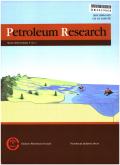在无化学添加剂干预的情况下通过管道输送重质原油和含蜡原油的流动保证方法
IF 4
Q1 Earth and Planetary Sciences
引用次数: 0
摘要
大多数非常规化石燃料储量由重质原油组成。原油通过管道、陆地和油轮运输。它失去了在其倾点以下流动的能力。因此,需要将原油加热到其倾点以上,或者在管道运输中需要某种机制来降低粘度,改善流量。流动保障方法取决于原油的类型和属性。饱和油、芳烃、树脂和沥青质是原油的主要成分,它们的组成和比例决定了原油的性质。较高分子量的组分,如蜡、树脂和沥青质,会导致原油的高粘度。化学添加剂是常用的降低粘度的方法。然而,近年来重质原油和含蜡原油的非化学处理方法的发展为管道运输中的流动保证提供了机会。这些方法包括稀释和乳化、环空和芯流、热和电加热、超声波和微波处理、太阳能加热、电磁场条件、热化学热处理和等离子体加热。然而,根据原油的特性、技术的适用性和经济考虑,这些技术有一定的优点和缺点。两种或两种以上降粘技术的结合更适合于管道运输中的流动保证。本文章由计算机程序翻译,如有差异,请以英文原文为准。
Flow assurance methods for transporting heavy and waxy crude oils via pipelines without chemical additive intervention
Most of the unconventional fossil fuel reserves consist of heavy crude oil. Crude oil is transported through pipelines, land, and cargo tankers. It loses its ability to flow below its pour point. Therefore, crude oil needs to be heated above its pour point, or it requires some mechanism to reduce viscosity and improve the flow in pipeline transportation. The flow assurance methods depend on the types and attributes of crude oil. Saturates, aromatic, resin and asphaltenes are the main constituents, and their composition and proportion define crude oil's properties. Higher molecular weight components, such as waxes, resins, and asphaltenes cause high viscosity in crude oil. Chemical additives are the commonly used method to reduce viscosity. However, recent advancements in non-chemical treatment methods for heavy and waxy crude oil provide an opportunity for flow assurance in pipeline transportation. These methods include dilution and emulsification, annular and core flow, thermal and electrical heating, ultrasonic and microwave treatment, solar heating, electromagnetic field conditions, thermochemical heat treatment, and plasma heating. However, these techniques have certain advantages and disadvantages depending on the characteristics of the crude, the applicability of technology, and economic considerations. A combination of two or more techniques for viscosity reduction is more suitable for flow assurance in pipeline transportation.
求助全文
通过发布文献求助,成功后即可免费获取论文全文。
去求助
来源期刊

Petroleum Research
Earth and Planetary Sciences-Geology
CiteScore
7.10
自引率
0.00%
发文量
90
审稿时长
35 weeks
 求助内容:
求助内容: 应助结果提醒方式:
应助结果提醒方式:


